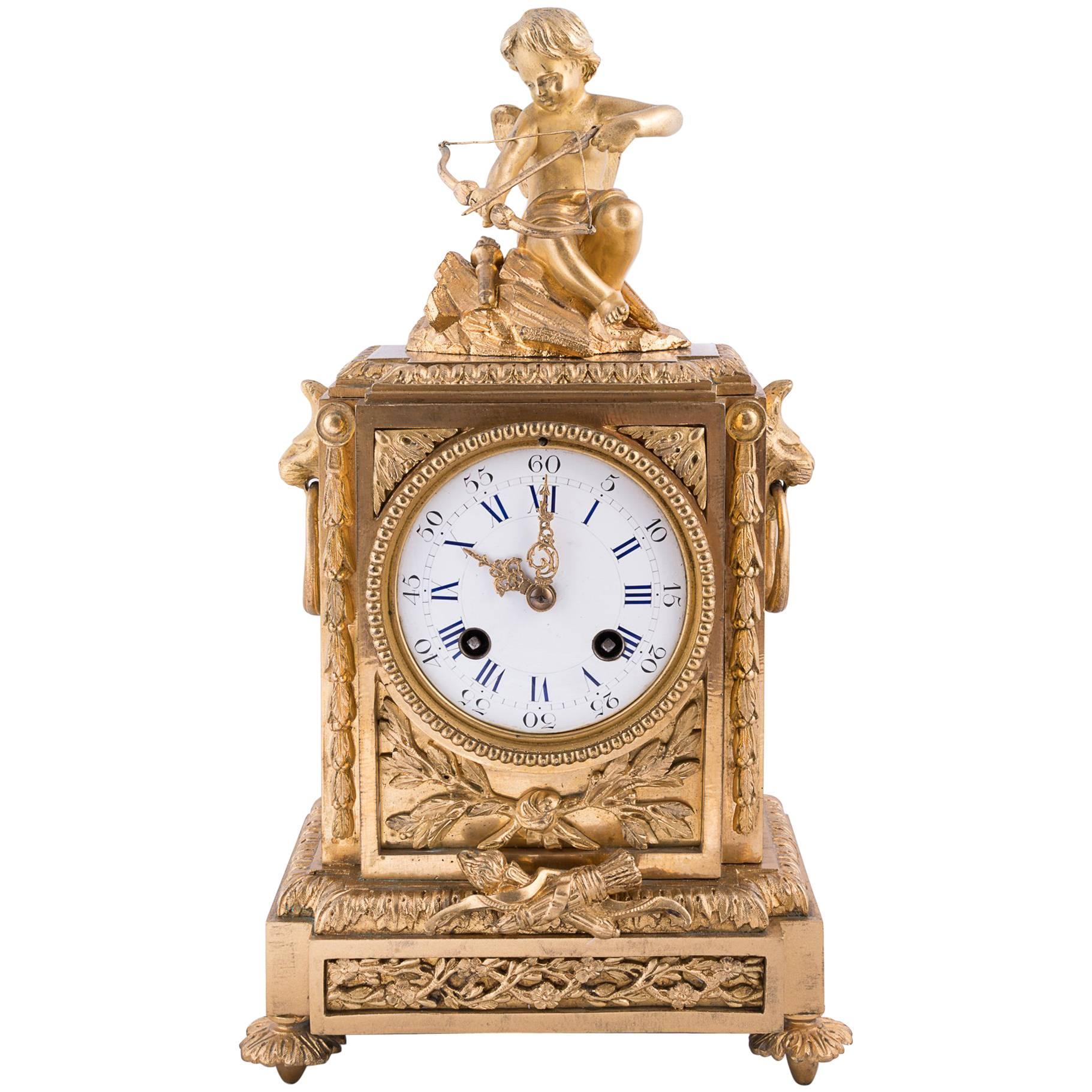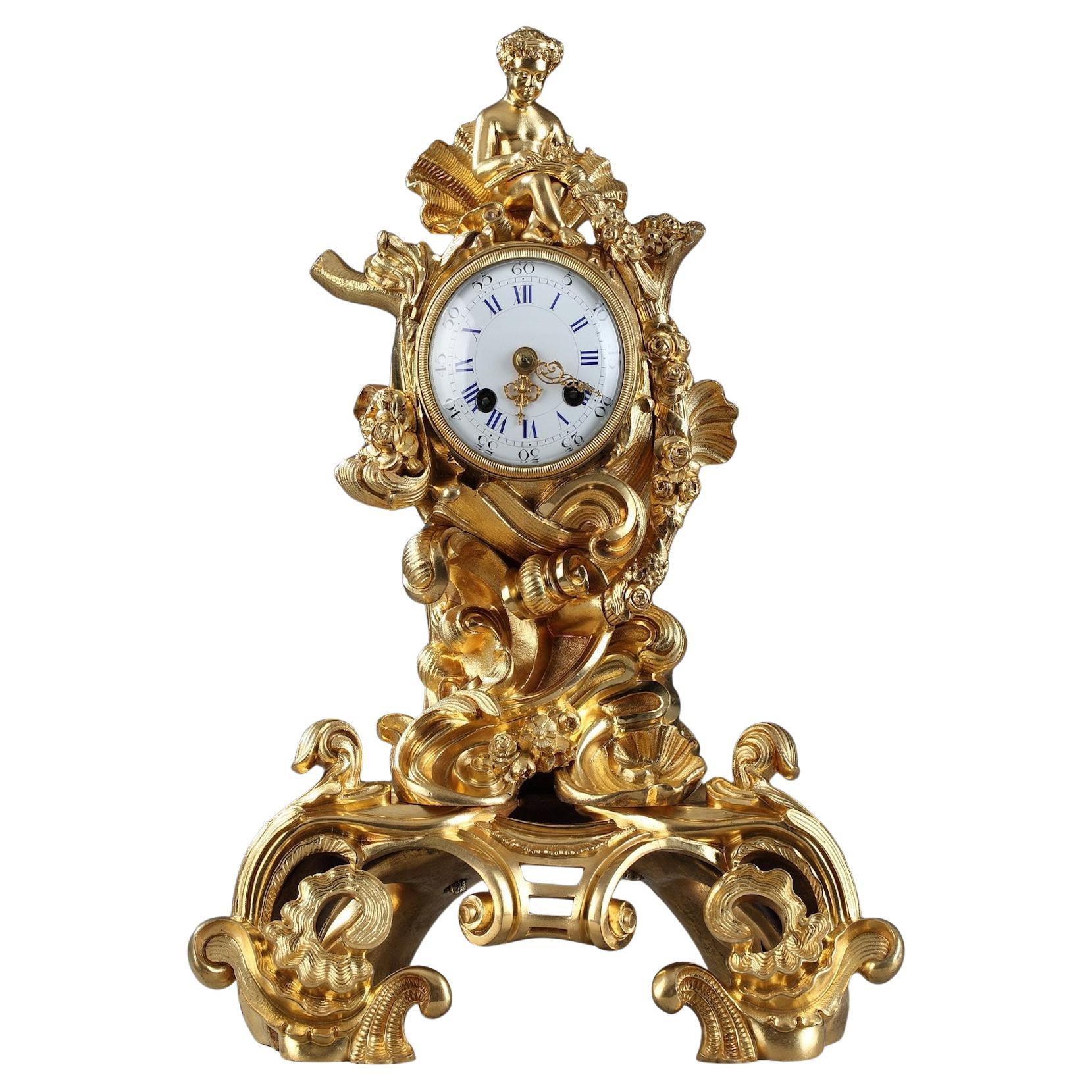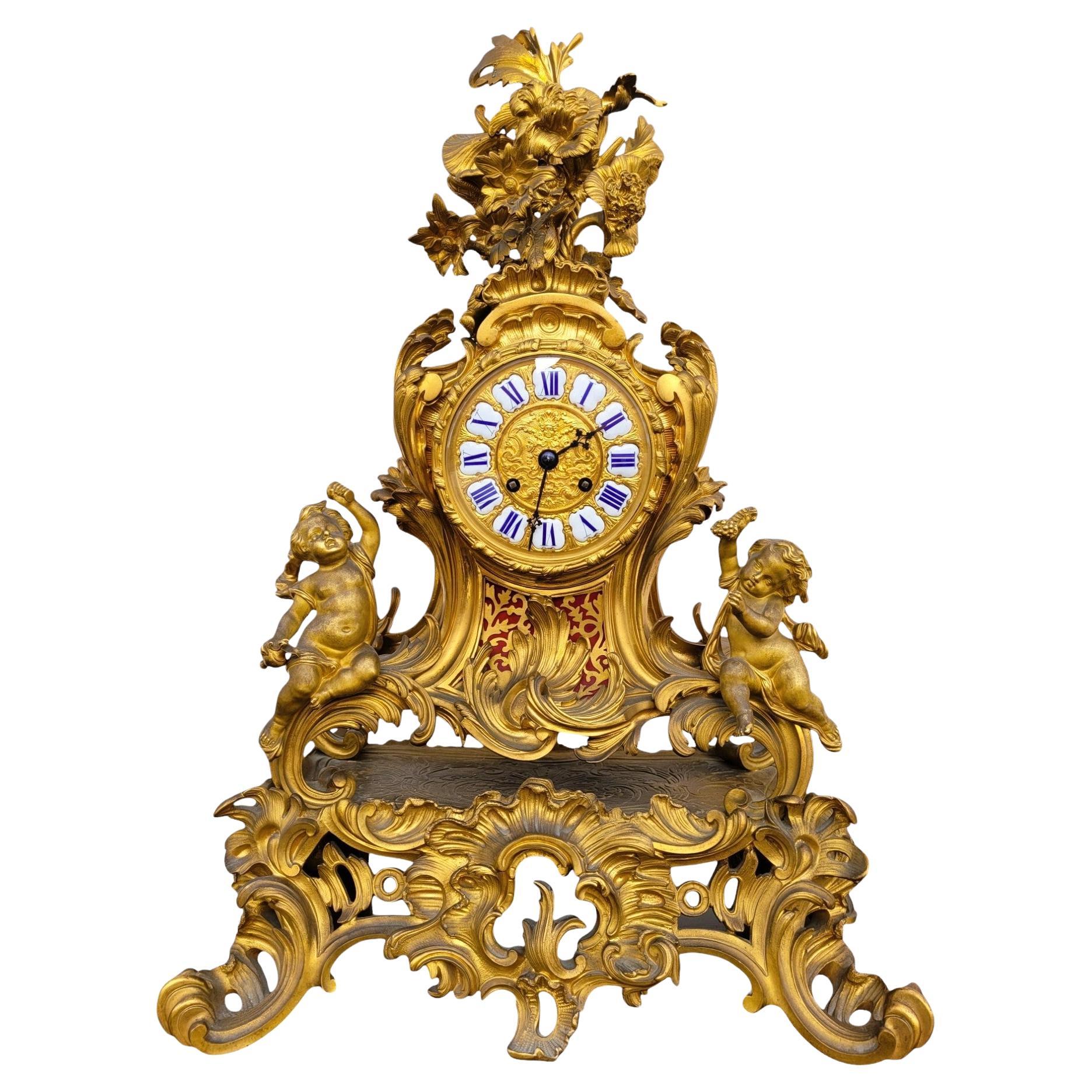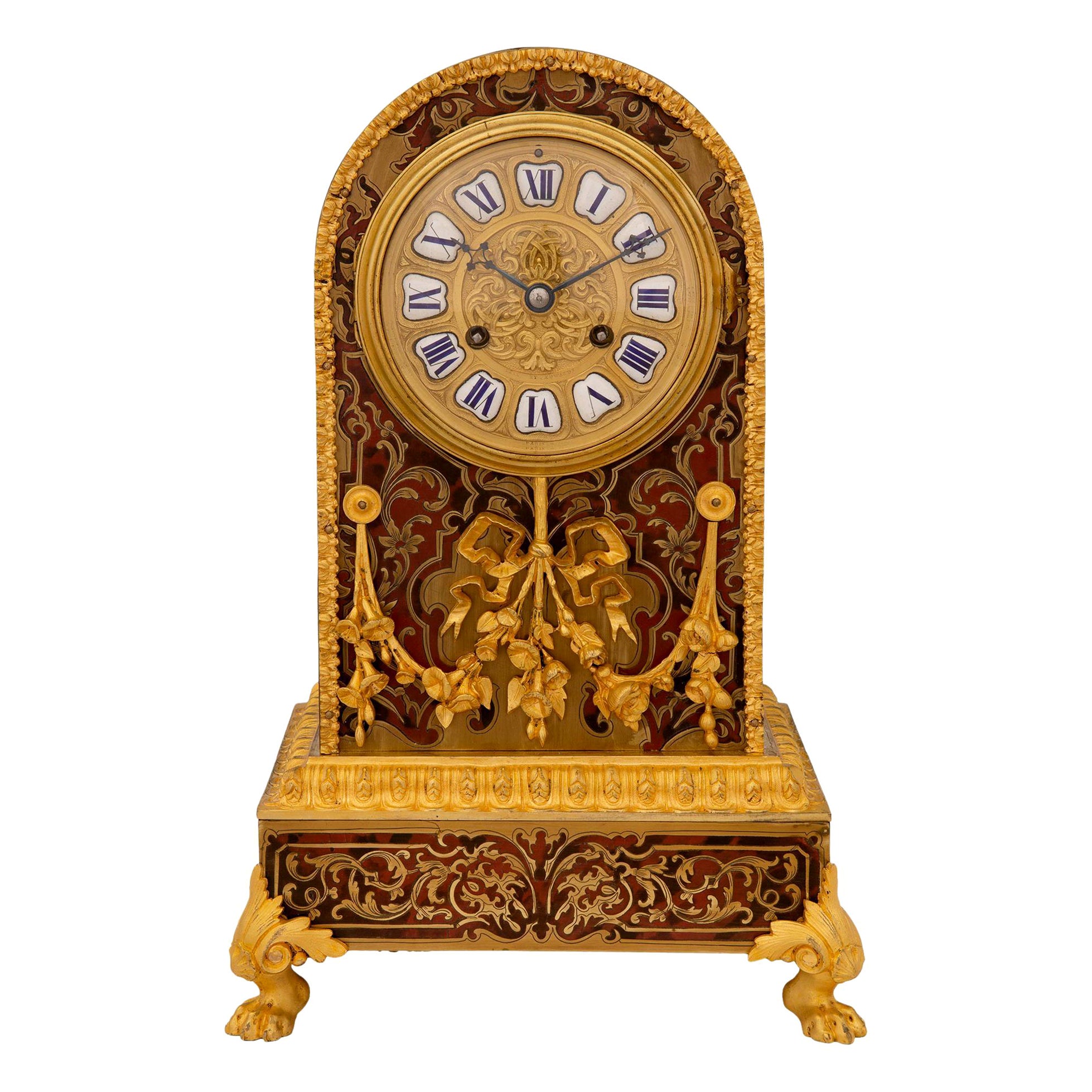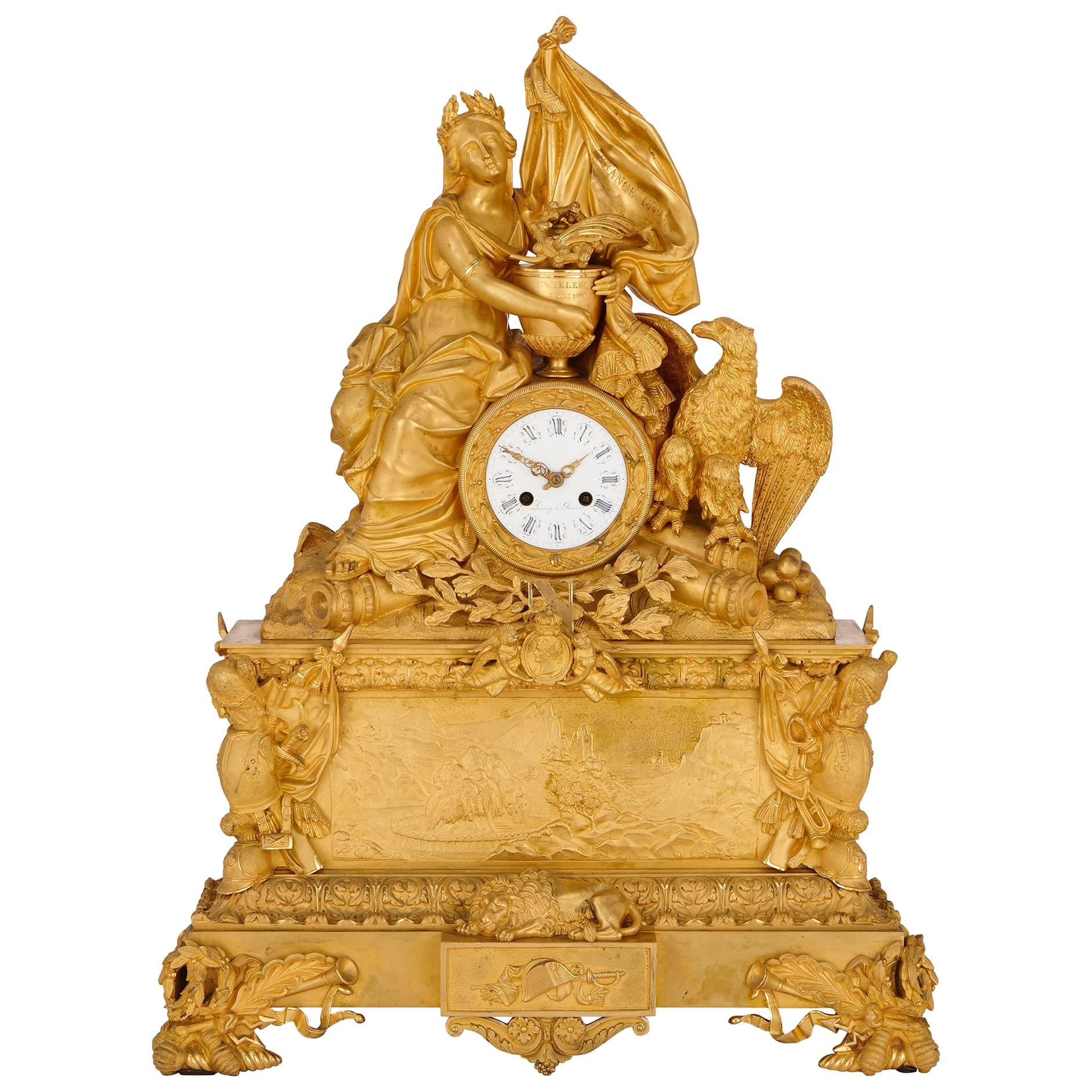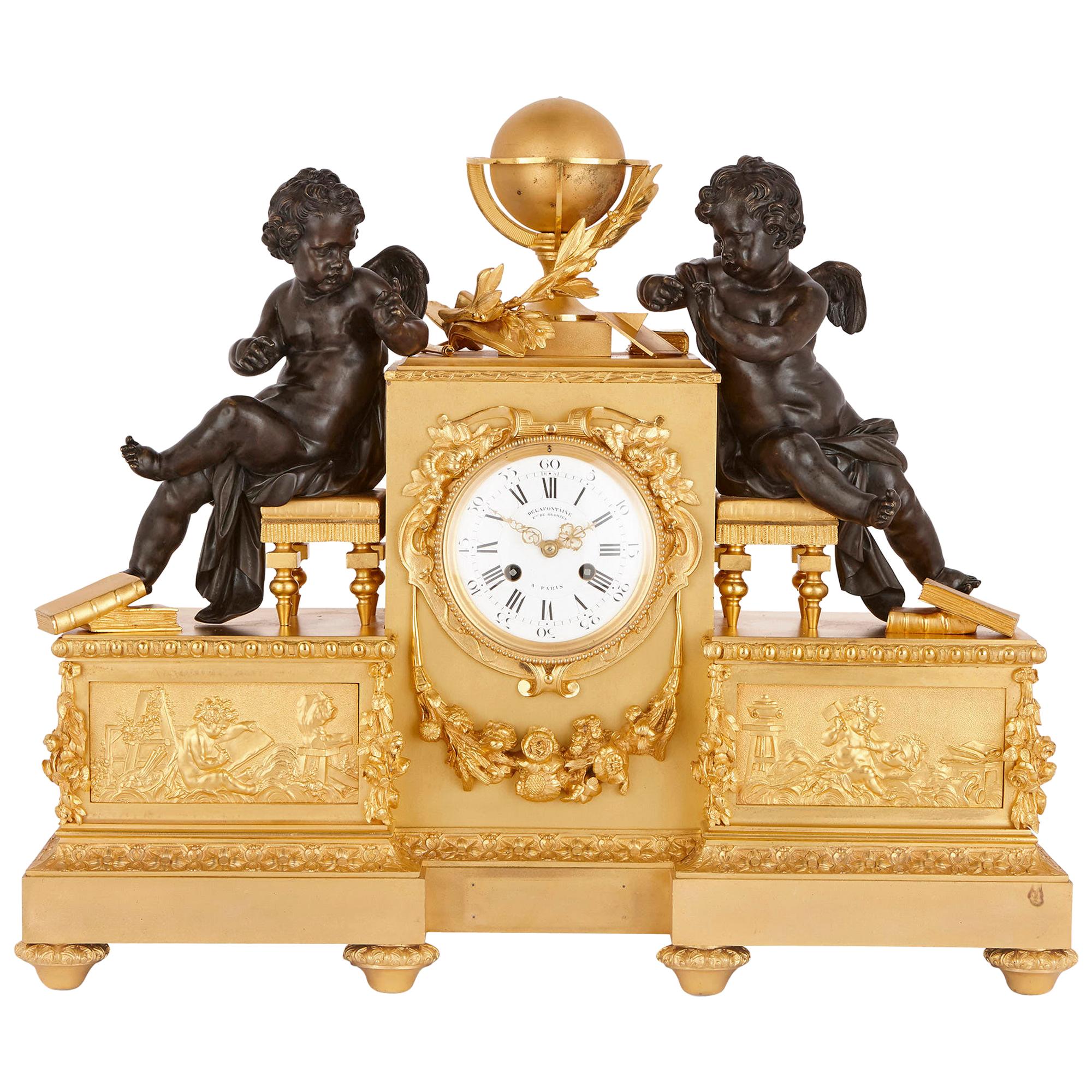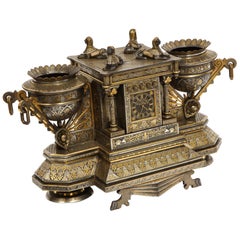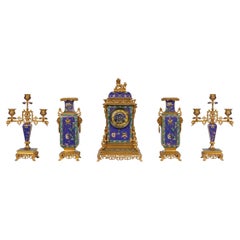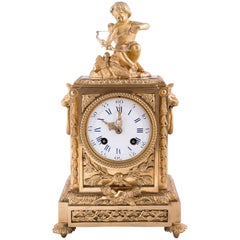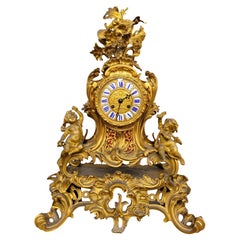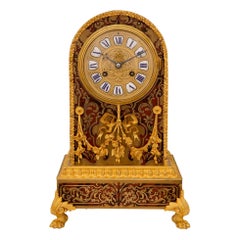Items Similar to Palatial & Rare Napoleon III French Ormolu and Patinated Bronze Clock, Detouche
Video Loading
Want more images or videos?
Request additional images or videos from the seller
1 of 22
Palatial & Rare Napoleon III French Ormolu and Patinated Bronze Clock, Detouche
Price Upon Request
Price Upon Request
Price Upon Request
Price Upon Request
Price Upon Request
Price Upon Request
Price Upon Request
Price Upon Request
Price Upon Request
Price Upon Request
Shipping
Retrieving quote...The 1stDibs Promise:
Authenticity Guarantee,
Money-Back Guarantee,
24-Hour Cancellation
About the Item
A Palatial and Extremely Rare Napoleon III French Ormolu and Patinated Bronze Regulateur de Parquet Clock by Louis-Constantin Detouche, Paris, Circa 1850
An exceptional testament to the grandeur and technical mastery of 19th-century French horology, this palatial and extraordinarily rare Napoleon III ormolu and patinated bronze Regulateur de Parquet clock stands as a crowning achievement of the renowned Parisian horologist Louis-Constantin Detouche. Created circa 1850, this monumental timepiece exemplifies the perfect synthesis of artistic opulence and mechanical precision, distinguishing itself as one of the most impressive works from Detouche’s illustrious oeuvre.
At over six feet tall, this clock’s imposing scale and decorative grandeur make it an object of immense historical and aesthetic significance. The case, crafted from the finest French ormolu, features two majestic patinated bronze seated putti, serving as allegorical figures and underscoring the artistic sophistication characteristic of the Second Empire style. The white enamel dial, elegantly signed "C. Detouche/Paris," affirms its prestigious maker, while the movement, meticulously numbered 7064 and bearing the stamps "C. Detouche RUE St. MARTIN" and "C. DETOUCHE 158 R. St MARTIN 160," speaks to the highest standards of 19th-century horological craftsmanship. Further distinguishing this piece is the medaille d’argent stamp, a testament to the numerous accolades and awards bestowed upon Detouche for his innovations in timekeeping.
A Masterpiece of Horological Artistry:
Louis-Constantin Detouche was not merely a clockmaker; he was a visionary whose contributions to horology redefined precision and complexity. This particular regulator clock is an extraordinary rarity within Detouche’s body of work. While the Maison Detouche produced numerous large-scale timepieces, few of this scale and decorative refinement exist outside of museum collections and historical institutions. Most of Detouche’s other known regulators incorporate significant astronomical or electrical complications, making this purely decorative and stately example a remarkable divergence from the norm.
Comparable examples further underscore its rarity and desirability. A similarly scaled astronomical regulator of approximately 185 cm in height, dating from 1855-1860, realized $218,625 at ArtCurial, Paris, in 2007, while another mahogany-cased electric regulator clock from the Paul Garnier collection fetched $86,909 at Christie’s London in 2004. Additionally, a monumental regulator clock, dating to 1863 and donated by Detouche to the Conservatoire Impérial des Arts et Métiers de Paris (Musée des Arts et Métiers, inv. 07179-0000), remains a historical artifact of similar prestige.
Detouche: A Legacy of Excellence:
The sheer grandeur of this clock aligns with critical historical descriptions of Detouche’s exhibition pieces. Notably, a contemporary critic at the Nîmes Exhibition of 1862 lauded Detouche’s craftsmanship, remarking upon the precision, ornamentation, and accessibility of his horological works. The critic highlighted the Maison Detouche’s receipt of prestigious awards, including the gold medal at the 1860 Exposition Universelle d’Horlogerie in Besançon and the gold medal at the London Exhibition of 1862. Furthermore, Detouche’s innovations earned him the Légion d’Honneur, a recognition of his profound impact on the field of horology.
Born in 1810, Louis-Constantin Detouche continued the legacy of his father, Georges Detouche, by expanding and refining the family business. Relocating to 158-160 Rue St. Martin in 1830, he later employed Jacques François Houdin as his chef d’atelier, whose technical ingenuity significantly enhanced the firm's reputation. The Maison Detouche’s acclaim was solidified through exhibitions at the Great Exhibition of 1851, the Exposition Universelle of 1855, and various international showcases that followed.
Among his most legendary achievements is the pair of astronomical regulators, one of which was prominently displayed at the intersection of Rue Saint-Martin and Rue de Rivoli before being transferred to the prestigious collection of François-Paul Journe SA Manufacture in Geneva. These masterpieces, featuring an astonishing fourteen subsidiary dials providing celestial and meteorological information, stand as testaments to Detouche’s unparalleled craftsmanship.
Conclusion
This palatial ormolu and patinated bronze Regulateur de Parquet by Louis-Constantin Detouche is more than a timepiece—it is a sculptural marvel and a historical artifact of immeasurable value. As one of the grandest and rarest works from Detouche’s repertoire, it represents the pinnacle of Napoleon III-era horology. Its blend of masterful design, technical excellence, and monumental scale ensures its place among the most significant 19th-century French clocks, making it an unparalleled acquisition for the most discerning collectors, institutions, and connoisseurs of fine horology.
Provenance:
Exhibited at the Great London Exhibition 1851
Exhibited by Detouche at the Exposition de Nimes, 1862, where Detouche won a gold medal, the clock remarked by the jury as “un régulateur genre rocaille en bronze doré, d'un gout remarquable et d'une hauteur de 1m 90”.
By repute, formerly in the collection of the Florsheim family, Chicago
Private North American collection, acquired privately early 2000s
Solomon Treasure New York, where acquired from above.
Literature:
Revue Chronométrique, vol. IV, Paris, 1862, "Exposition de Nîmes - Rapport du Jury” pp. 605-609.
Tardy, Dictionnaire des horlogers français, Paris, 1971-1972, pp. 182-183.
Measures: 81" high x 50" wide x 19" deep
Excellent condition. No damages noted.
The glass panels on the front and back of the lower sections have been replaced by Perspex.
- Creator:C. Detouche (Clockmaker)
- Dimensions:Height: 81 in (205.74 cm)Width: 50 in (127 cm)Depth: 19 in (48.26 cm)
- Style:Napoleon III (Of the Period)
- Materials and Techniques:
- Place of Origin:
- Period:
- Date of Manufacture:circa 1850
- Condition:Wear consistent with age and use.
- Seller Location:Queens, NY
- Reference Number:1stDibs: LU1798215584552
About the Seller
5.0
Vetted Professional Seller
Every seller passes strict standards for authenticity and reliability
Established in 1980
1stDibs seller since 2016
63 sales on 1stDibs
Typical response time: 5 hours
- ShippingRetrieving quote...Shipping from: Queens, NY
- Return Policy
Authenticity Guarantee
In the unlikely event there’s an issue with an item’s authenticity, contact us within 1 year for a full refund. DetailsMoney-Back Guarantee
If your item is not as described, is damaged in transit, or does not arrive, contact us within 7 days for a full refund. Details24-Hour Cancellation
You have a 24-hour grace period in which to reconsider your purchase, with no questions asked.Vetted Professional Sellers
Our world-class sellers must adhere to strict standards for service and quality, maintaining the integrity of our listings.Price-Match Guarantee
If you find that a seller listed the same item for a lower price elsewhere, we’ll match it.Trusted Global Delivery
Our best-in-class carrier network provides specialized shipping options worldwide, including custom delivery.More From This Seller
View AllExquisite French Empire Ormolu and Cut-Crystal Clock, c. 1815
Located in Queens, NY
An exquisite French Empire ormolu and cut-crystal clock, c. 1815, attributed to Baccarat.
Made from the finest quality mercury gilding ormolu, this c...
Category
Antique Early 19th Century French Empire Mantel Clocks
Materials
Crystal, Ormolu
A Monumental and Exceptional French Ormolu and Turquoise Sevres Porcelain Clock
Located in Queens, NY
A Monumental and Exceptional French Ormolu and Turquoise Sevres Porcelain Clock, circa 1875
Immerse yourself in the splendor of 19th-century French artistry with this monumental and...
Category
Antique 19th Century French Napoleon III Mantel Clocks
Materials
Ormolu
Rare & Important Spanish Damascene, Iron, Steel, Gold Inlaid Clock, Eibar, Spain
By Plácido Zuloaga 1
Located in Queens, NY
A highly rare and important Spanish damascene, "Egyptian Revival" iron, steel, gold, and silver inlaid clock,
circa 1900
Exceptional quality, damascened in gold and silver inlay.
Measures: 10" high x 16" wide x 9" deep.
Definitely made by one of Placido Zuloaga...
Category
Early 20th Century Spanish Egyptian Revival Mantel Clocks
Materials
Steel, Iron
An Exceptional French Japonisme Ormolu and Champleve Enamel Five Piece Clock Set
By Edouard Lievre
Located in Queens, NY
An Exceptional French Japonisme Ormolu and Champlevé Enamel Five-Piece Clock Set, In the Manner of Edouard Lièvre, circa 1870, Paris.
This extraordinary French Japonisme clock set, ...
Category
Antique 19th Century French Japonisme Mantel Clocks
Materials
Enamel, Ormolu
Exquisite Napoleon III French Ormolu Figural Basket Centerpiece, Circa 1880
By Alfred Emmanuel Louis Beurdeley
Located in Queens, NY
An exquisite Napoleon III French ormolu figural basket centerpiece, Circa 1880, Attributed to Alfred Emmanuel Louis Beurdeley.
Depicting four mercury-gilded bronze ormolu cherubs holding a basket, the base with trophies and scrolling.
This monumental centerpiece...
Category
Antique 19th Century French Napoleon III Centerpieces
Materials
Ormolu
Important, Rare French Ormolu Sevres Style Porcelain Jewelry Box on Bronze Table
Located in Queens, NY
A rare and important French ormolu/bronze and Sevres style turquoise porcelain jewelry box casket on matching French ormolu/bronze table with Sevres style porcelain plaques.
Of palatial / monumental size!
"The Marie Antoinette Jewelry...
Category
Antique Late 19th Century French Napoleon III Jewelry Boxes
Materials
Bronze, Enamel, Ormolu
You May Also Like
Fine Napoleon III Bronze Dore Clock
Located in New Orleans, LA
A beautifully detailed 19th century bronze dore clock with the figure of cupid on the top.
Category
Antique Late 19th Century French Napoleon III Mantel Clocks
Materials
Bronze
19th Century Napoleon III Gilt Bronze Clock in Rocaille Style
Located in Paris, FR
Small gilt bronze clock in Rocaille style, richly decorated with foliages, shells and foliated scrolls. The white enameled dial, with Roman numerals for hours and Arabic for minutes,...
Category
Antique 19th Century French Rococo Mantel Clocks
Materials
Bronze
Rocaille Clock In Gilt Bronze, Napoleon III, 19th Century
Located in MARSEILLE, FR
Beautiful gilded bronze clock with lively decoration in the rococo style: flowers and foliage, putti
Clock which is composed to be seen from all sides; dial with numbers in porcelai...
Category
Antique 19th Century French Napoleon III Table Clocks and Desk Clocks
Materials
Bronze
French 19th Century Napoleon III Period Boulle Clock
Located in West Palm Beach, FL
A striking high quality French 19th century Napoleon III period ormolu, tortoiseshell, and brass inlaid Boulle clock. The clock is raised by handsome ormolu paw feet with acanthus le...
Category
Antique 19th Century French Napoleon III Mantel Clocks
Materials
Brass, Ormolu
French Antique Ormolu Mantel Clock by Leroy Commemorating Napoleon Bonaparte
By LeRoy
Located in London, GB
This fine mantel clock is cast entirely in ormolu by celebrated Parisian clockmaker Leroy and commemorates the return of Napoleon's ashes to France in 1840. The clock is set on a rectangular, tiered base with four decorative feet. The lower tier is centred with a sleeping lion above a plaque showing the scarf, sword and hat of Napoleon. There is a relief plaque above the lion showing a ship off St Helena (the location of Napoleon's exile) and to either side further decorations formed as martial trophies. To the top of the plaque is a portrait medallion of Napoleon with winged cherubs and the letter 'N'. The circular dial of the clock, signed 'Leroy a Paris', is set to the centre above the base within an ormolu border and flanked by the figures of France and an eagle to either side. Between them they hold an urn, which bears the inscription 'Ste Helene / 5 Mai 1821'. The figure of France holds a flag inscribed 'France 1840.'
This clock was produced in 1840 by Parisian clockmaker Leroy et fils...
Category
Antique 1840s French Napoleon III Mantel Clocks
Materials
Ormolu
Napoleon III Period Gilt and Patinated Bronze Clock by Delafontaine
Located in London, GB
The acclaimed French bronze foundry, Delafontaine, created this remarkable mantel clock. At the time this piece was crafted, in c.1860, the company was directed by Auguste-Maximilien Delafontaine (1813-1892). The firm was famous for its high-quality artistic bronzes, which can today be viewed in major art collections, such as the Louvre in Paris.
Shaped like an upside down ‘T’, this gilt bronze...
Category
Antique 1860s French Napoleon III Mantel Clocks
Materials
Enamel, Ormolu, Bronze
More Ways To Browse
French Artifacts
French Ormolu Bronze Clock
Rare Antique Clocks
Rare Antique Clock
Antique Clock Stand
Rare French Clocks
Gold Ormolu Stand
Rual Georges
Early American Clocks
Medaille Bronze
Regulator A
Imperial Glass Works
American Case Clocks
Antique Clocks York
Napoleon Jacques
1855 Clocks
Antique Parquet
Crown Fine Arts
